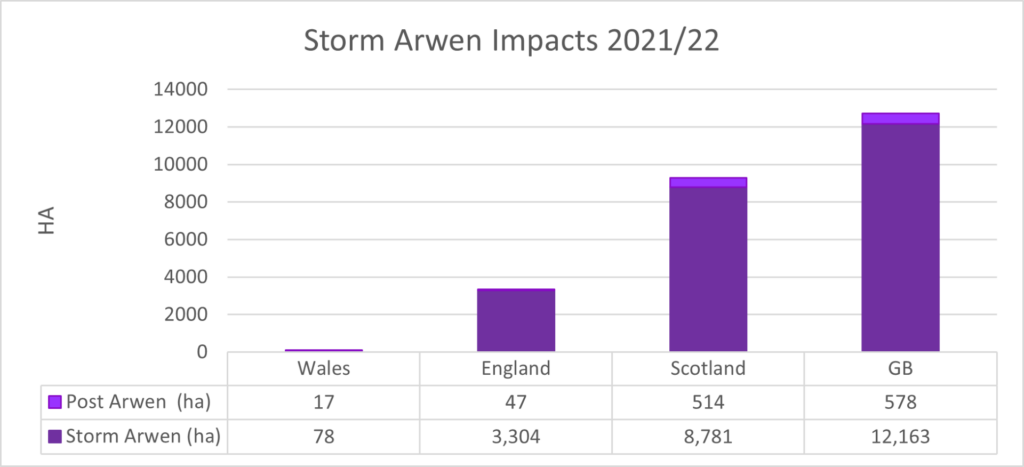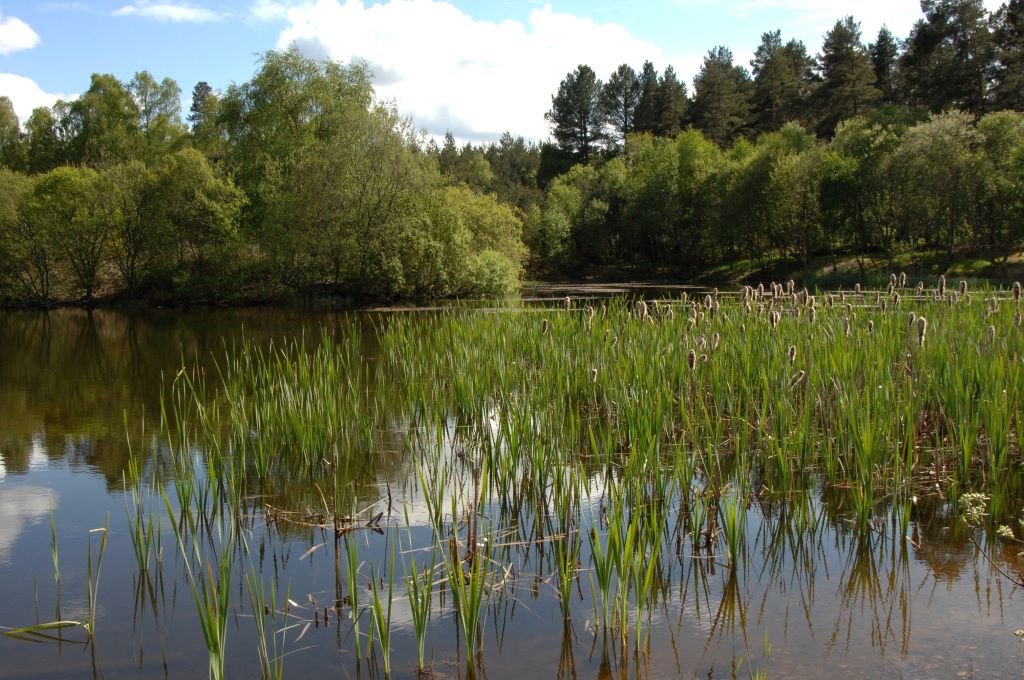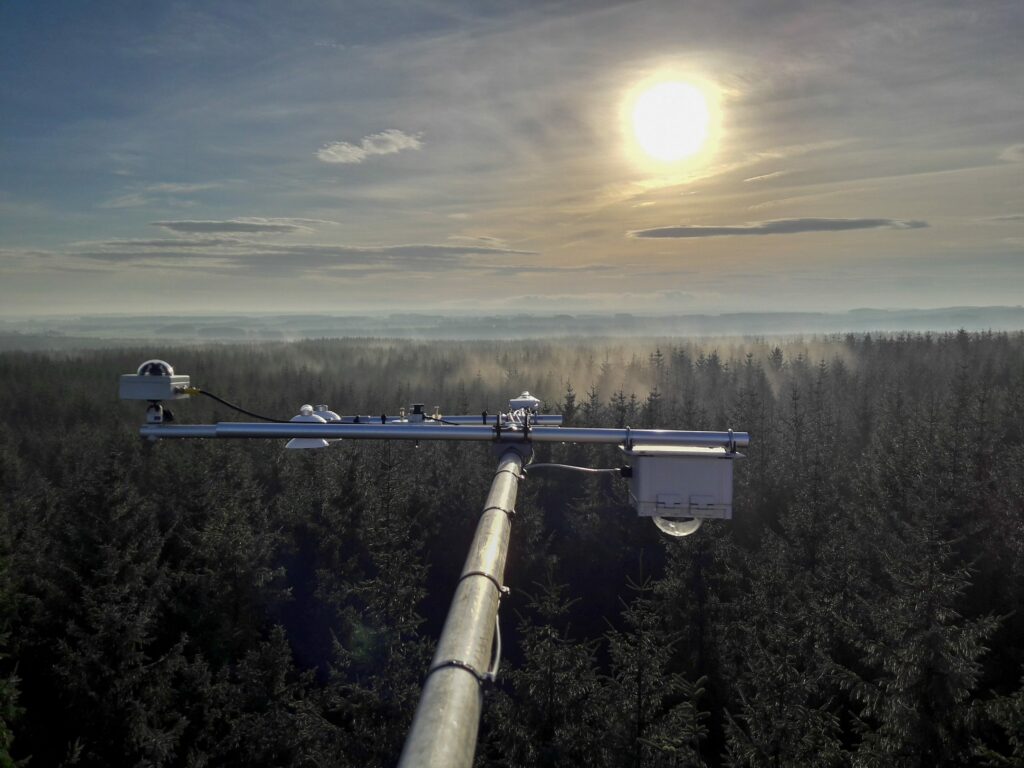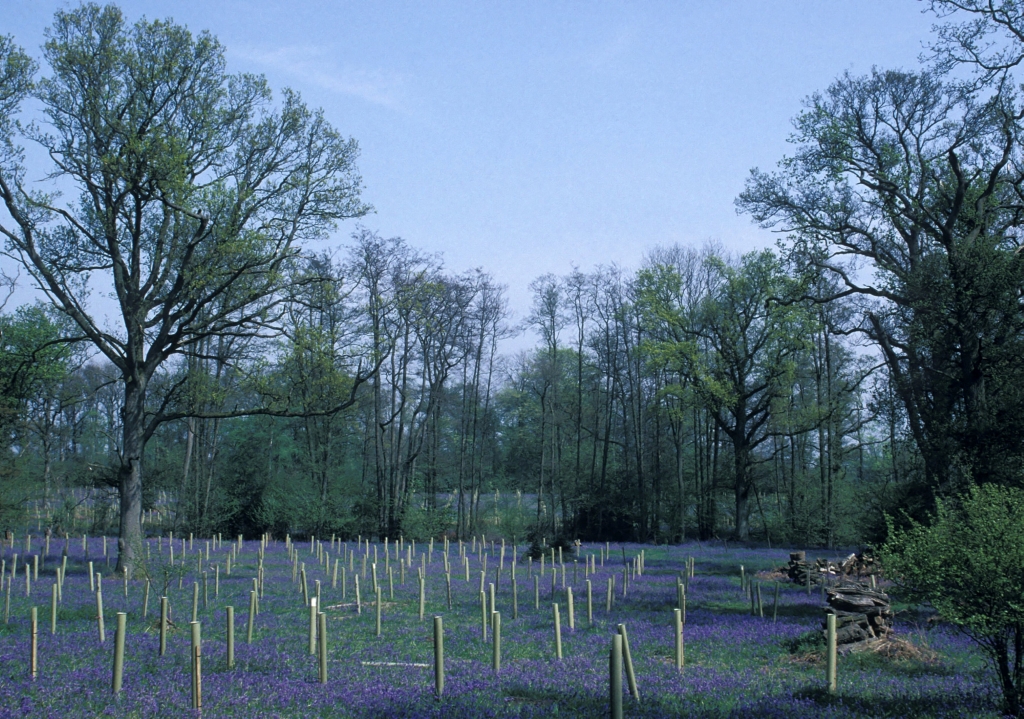A major work area at Forest Research this year has been the development of tools, guidance and research into the effects and mitigation of climate change. In 2022, we published the results of our pioneering Storm Damage Assessment, which establishes the scale and scope of damage in woodlands and will streamline assessments following future storms. A Woodland Water Code is in development, which will help guide responses to key pressures such as diffuse pollution, flooding and rising water temperatures. Our ongoing research into alternatives to plastic tree shelters will allow FR to provide advice about the efficacy of more eco-friendly tree shelter designs. Our research into forest carbon dynamics is aiding our understanding of the processes and rates of exchange of greenhouse gases in forests, and how they are affected by forest management. This year also saw the publication of the UK Forestry Standard Practice Guide on Adapting Forest and Woodland Management to the Changing Climate, providing essential guidance on how to adapt management approaches and plan for future conditions. Our Climate Change Hub, which launched in January 2023, is an exciting new resource which brings together the latest research on climate change and adaptation, making it readily accessible to those who need it and which will evolve as new guidance emerges.
Following a particularly damaging winter storm season over 2021/22, Forest Research undertook an analysis of storm damage in forests across Great Britain using Remote Sensing data and a pioneering algorithm developed as part of the collaborative response effort to Storm Arwen with Scottish Forestry, Forest Services England and Confor.
An additional citizen science project was then carried out, which allowed foresters, land managers and landowners to report the damage on the ground. This project, combined with improvements to the machine learning algorithms used within the satellite data and mapping work, allowed smaller areas of damage (less than 0.5ha) to be captured. This significantly improved the accuracy of the damage assessment. This work helped forestry regulators, practitioners and logistics managers understand the scale and scope of the damage they were dealing with.
A meeting was held with country representatives in June 2022 to review the response effort and discuss a more integrated storm management service for the future.
Final estimates of storm damage, distinguishing areas of windthrow due to the major storm, Arwen, from that caused in subsequent storms through extension of existing patches or creation of new patches were.

Woodlands provide a wide range of societal benefits, including several water-related ones. Prominent among these are the protection of water quality, reduction in flood flows, and ‘water cooling’.
In response to the increasing interest in Nature Based Solutions and the challenges posed by climate change, we have been developing the concept of a Woodland Water Code (WWC), whereby these water benefits are quantified to support greater private investment in woodland creation to help tackle key water pressures, such as diffuse pollution, flooding and rising water temperatures.
The work builds on a recent Forest Research led international COST Action involving 40 countries, PESFOR-W, which produced guidance on developing woodlands for water payments for ecosystem services schemes. This has informed government thinking and led to wider support for developing a WWC as a novel support mechanism, which is included as an Action in the England Trees Action Plan (ETAP). The aim of the Action Plan is to treble tree planting rates in England by the end of the current Parliament, underpinned by more than £750 million of investment allocated through Defra’s Nature for Climate Fund (NCF).
We recently explored different options for developing the WWC in a scoping report, which led to a successful bid to the NCF R&D fund. Work on developing the WWC started at the end of 2022 and involves the Forestry Commission, Scottish Forestry and other partners. It is hoped that the WWC can be embedded within the Woodland Carbon Code, allowing the use of existing governance structures and delivering synergies between payments for carbon and water-related benefits of woodland creation. The aim is to launch an initial version of the Code covering the water quality benefits of tree planting in early 2025.
At the same time, we are continuing to work with a NatureScot led initiative to explore the scope to develop a wider ‘Water Code’ that would cover the water benefits provided by other habitat types, in addition to woodland.

This year, a research project studying the effect of clear-fell harvesting on soil greenhouse gas (GHG) fluxes of CO2, CH4, and N2O was completed. The research focussed on Sitka spruce growing on a peaty gley organo-mineral soil in northern England. Fluxes from the soil and litter layer were measured by the closed chamber method and gas chromatography over 4 years in two mature stands, with one area harvested after the first year. Fluxes were measured from eight soil chambers per area approximately monthly throughout the experiment. Concurrent measurements of soil temperature and moisture helped to elucidate reasons for the changes in fluxes.
In the 3 years after felling, there was a significant increase in the soil temperature, particularly between June and November (3 to 5 oC higher) because of reduced shading. Soil moisture was 62% higher in the felled area because of reduced evapotranspiration. These had pronounced effects on the GHG balance in addition to the removal of the trees and their carbon input to the soil. Annual soil CO2 effluxes reduced to almost a third in the first year after felling and half in the second and third year compared to before felling, while those from the unfelled area were little changed. Annual effluxes of N2O more than doubled in the first two years, although by the third year they were only 20% higher. CH4 fluxes changed from a small net uptake before felling to a small efflux increasing over the 3 years, presumably because of the wetter soil after felling. Emissions of methane and nitrous oxide have a stronger global warming effect than carbon dioxide. When the fluxes of three gases were compared using a standardised measure of global warming potential the results showed that soil CO2 effluxes dominated the annual net GHG emission but N2O contributed up to 20% of this. Overall, this study showed fluxes of CO2, CH4, and N2O responded differently to clear-felling due to the significant changes in soil biotic and abiotic factors and showed large variations between years. This demonstrates the need for multi-year measurements to enable robust estimates of the effect of harvesting on the GHG balance of managed forests.

In 2021, Forest Research scientists began a project investigating alternatives to conventional plastic treeshelters. Although tree shelters are a widely used and effective method of protecting trees from browsing damage in some circumstances, they can also be a source of plastic pollution if they are not collected at the end of their useful life.
A number of products made from alternative materials are being brought to market that, it is claimed, are biodegradable, and hence might provide a more environmentally friendly solution if treeshelters cannot be collected. The practicality, durability and efficacy of these products are being subject to a rigorous, independent test by Forest Research. Other approaches to prevent browsing that are also being investigated include the use of fencing, thorny shrubs, sheep’s wool and Trico repellent (based on sheep’s fat).
The research project comprises field experiments to test the efficacy and impacts on tree growth of the different methods of tree protection across a range of contrasting forest sites in Britain, an assessment of likely environmental impact and degradation end points of the alternative tree-shelter products, and a time and method study focusing on the costs and practicality of adopting the different approaches. This project is now in its second year and is expected to run for a further five years.

In May 2022, the UKFS Practice Guide ‘Adapting forest and woodland management to the changing climate’ was published. This Guide provides advice to forest and woodland owners, managers, planners and policymakers on how to adapt management approaches and plan for the changing climate. The adaptation framework presented in the Guide takes the reader through the process of choosing and implementing appropriate adaptation measures, bringing together the latest insights from research and practice.
The Practice Guide is supplemented by nine case studies which show how adaptation measures are being applied in response to changing risks from wildfire, drought, wind, and disease. The case studies show the application of Forest Research tools and resources, such as the Ecological Site Classification tool to assess suitability of tree species under a future climate and the use of ForestGales to plan for changing wind risk. Knowledge Exchange with the forestry sector on climate change and adaptation is critical to encourage owners and managers to adapt to the impact of risks to forests and woodlands in a climate emergency. FR has developed a ‘Climate Change Hub’ to support sector decision-making by creating a one-stop-shop of information tailored to forest owners and managers about managing forests and woodlands in a changing climate. The Climate Change Hub will centralise the latest information and practical guidance on climate change adaptation, including risk and adaptation measures, official country guidance and further resources such as videos and case studies. The Climate Change Hub was launched in January 2023.